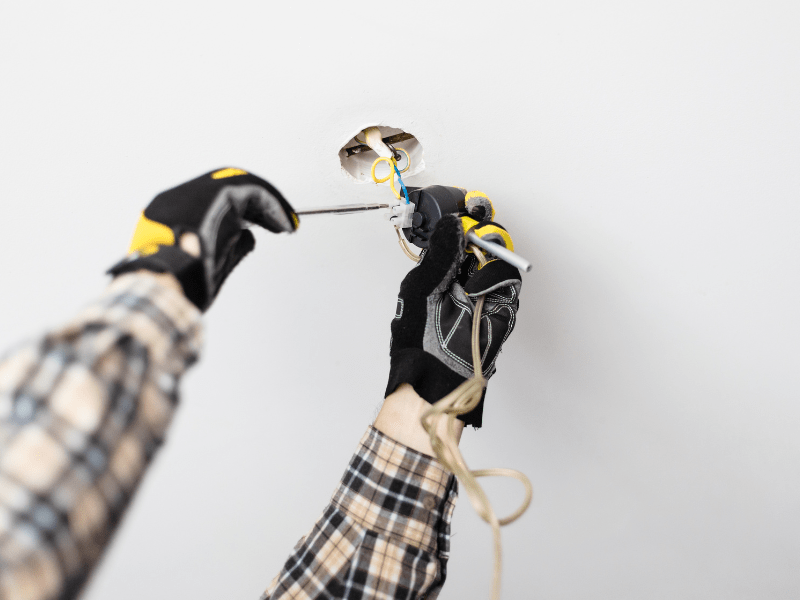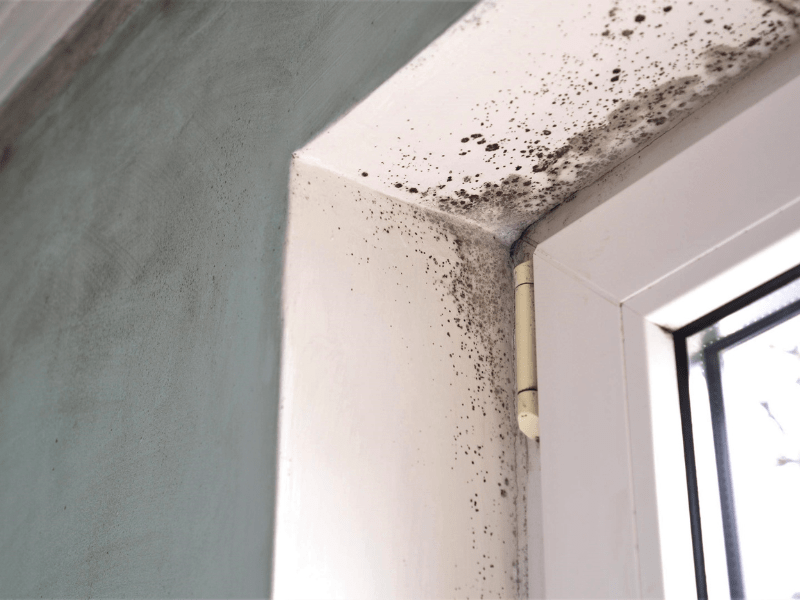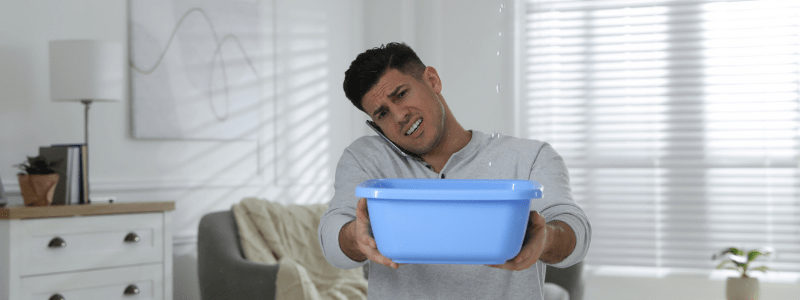Common maintenance problems with older Northern Virginia homes
Ever felt like your Northern Virginia rental home is just a storm away from springing a new leak? If you’ve nodded yes, then you’re no stranger to the most common maintenance problems with older Northern Virginia homes. Like that old tree in the yard that’s seen more seasons than we can count, these houses carry their years with pride—and sometimes pesky issues.
Table of Contents:
- Roofing Challenges in Historic Northern Virginia Homes
- Electrical System Hazards in Aged Properties
- Attic Insulation and Ventilation Issues
- Drainage Dilemmas Surrounding Older Residences
- Plumbing Pitfalls in Vintage Homes
- FAQs in Relation to Most Common Maintenance Problems With Older Northern Virginia Homes
- What are the most common maintenance issues with older Northern Virginia homes?
- How can I prevent or reduce costly repairs in an older Northern Virginia home?
- Are there any specific safety concerns that come with owning an older Northern Virginia home?
- What should I look for when inspecting a potential purchase of an older Northern Virginia home?
- Are there any special considerations to take into account when maintaining an older Northern Virginia home compared to newer homes?
- Conclusion
Roofing Challenges in Historic Northern Virginia Homes
Landlords of older homes know all too well that with charm comes challenge, especially when it’s time for a roof replacement. These grand old structures in the Northern Virginia area have seen their fair share of history, but they’re not immune to high winds and heavy rains—prime culprits behind severe damage.

Identifying Signs of Roof Damage
The first step is spotting trouble early on. You might notice missing shingles or find granules—the tiny bits that give shingles texture—in your gutters. Both are telltale signs you need repair services pronto. If left unchecked, these small problems can lead to water stains on ceilings and potentially more severe damage inside your home.
Sometimes after a storm, take a walk around your property; if you spot any roofing materials or asphalt shingles out of place, act fast. It’s about avoiding costly repairs later by nipping issues in the bud now.
Selecting Durable Roofing Materials
To prevent future headaches like leaks from turning into full-blown waterfalls indoors, invest in high-quality roofing materials right off the bat—it’ll make a big difference down the road. Asphalt shingles are popular among Virginia homeowners because they’re built tough against elements we often see here: scorching summers and freezing winters alike.
And let’s be real—if you’ve ever had to collect rainwater in pots and pans scattered across your living room floor (because who hasn’t?), then you know good shape up top means everything stays dry below. Regular maintenance is key; annual check-ups from reputable roof replacement services keep those historical gems shining without leaking precious history—or dollars—away.
Electrical System Hazards in Aged Properties
The charm of an older home can be undeniable, but let’s not beat around the bush: when it comes to electrical systems, that old-world charisma could be hiding some risky business. Imagine plugging in your sleek new espresso machine only for it to throw a hissy fit because the ancient wiring just can’t handle its modern needs.

Upgrading Outdated Electrical Wiring
We’ve all been there—you plug in one too many gadgets and suddenly you’re sitting in the dark. In homes where proper electrical wiring is as vintage as vinyl records, this scenario isn’t just annoying; it’s downright dangerous. Modern appliances are divas with their power demands and outdated systems are often not up to code, making them fire hazards waiting to happen.
Hiring a professional electrical contractor for repairs isn’t just about keeping up with the Joneses—it’s about safety first and foremost. Plus, upgrading electrical systems isn’t only good sense; it’s also great for energy efficiency—think lower utility bills (more money for lattes.) and possibly even tax credits if you play your cards right.
But why should Virginia homeowners care? Well, here’s a stat that might shock you: overloaded circuits from mismatched appliance-to-wiring pairings contribute significantly to residential fires. It seems pretty clear then—bringing those old wires into the 21st century is more than just an item on your home maintenance checklist; it’s crucial.
If we talk specifics—a Northern Virginia area classic like Colonial Revival architecture has likely seen several decades since its last major electric upgrade—and who knows what kind of DIY disasters may lurk behind those plaster walls?
The National Association of Realtors would agree that while historical allure adds value to real estate investments, smart updates like rewired electrics solidify both safety standards and property desirability—which means peace of mind now could turn into cold hard cash later down the line when selling time rolls around.
Attic Insulation and Ventilation Issues
Maintaining a cozy home in Northern Virginia means keeping an eye on your attic. Why? Because proper attic ventilation and insulation are like the unsung heroes of your house, fighting off mold while saving you some cash on energy bills. Think of it this way: without enough air circulation up there, excess moisture throws a party, inviting mold as the guest of honor—nobody wants that.
Combating Mold with Improved Ventilation
Say goodbye to stuffy attics and hello to fresh air. To keep those pesky spores at bay, improving air circulation is key. Start by checking out vents for any blockages—you might be surprised what you find hiding in there. It’s not just about letting stale air escape; bringing in the good stuff matters too. Make sure intake vents aren’t playing hide-and-seek under insulation or other debris.
Beyond clearing pathways for airflow, consider adding more vents if necessary. Sometimes older homes don’t have enough venting built-in—that’s where upgrades come into play. And remember, better ventilation doesn’t only prevent mold; it helps control temperature extremes both during sizzling summers and chilly winters here in Northern Virginia area homes—a double win.

If we’re talking numbers—and let’s face it, who isn’t these days?—improving your attic’s breathability can make a real dent in those cooling and heating costs. The idea is simple yet brilliant: when your attic can breathe properly through well-placed insulation and savvy vent placement (think soffit-to-ridge flow), hot summer temps won’t sear through ceilings nor will winter chill sneak down from above.
No one enjoys throwing money out the window—or roof—so making these tweaks can help keep that hard-earned cash right where it belongs: padding your wallet rather than fattening up utility bills. Studies show poorly ventilated attics lead directly to unnecessary expenses due to energy inefficiency—it’s time to turn that around.
Drainage Dilemmas Surrounding Older Residences
Older homes in Northern Virginia often whisper tales of their past, but one story homeowners aren’t fond of involves the impact of poor grading and drainage. If not tackled head-on, these silent menaces can lead to foundation nightmares or an unwanted indoor pool courtesy of water damage.
Maintaining a Dry Environment Around the Home
A stitch in time saves nine—especially true when keeping your home’s perimeter as parched as a desert. Landscaping solutions for better drainage are like setting up a moat around your castle; they’re defensive strategies against Mother Nature’s sieges. Picture this: instead of rainwater cozying up to your foundations like an uninvited guest, it gets rerouted away with strategic slopes and well-placed drains.
The stakes are high—as improper grading might have you dialing for costly sewer line repairs before you can say “flood.” You see, without maintaining that dry environment around our charming abodes, we might be giving H2O free rein to seep into places it shouldn’t.
Impact Of Poor Grading And Drainage On Homes
Surely no homeowner fancies waking up to find their basement transformed into Atlantis overnight. But here’s the rub: if landscaping is more ’60s shag carpet than sleek modern design—meaning flat or sloping towards the house—you’re rolling out the red carpet for water troubles. These unwelcome issues can range from mildew parties in basements to structural soirees where foundations crack under pressure—quite literally.
To put it bluntly, getting ahead of these problems means not only saving green on utility bills but also avoiding green growths where they don’t belong (yes mold, I’m looking at you). It pays off—a little legwork now could save buckets later.
National Association of Realtors suggest diving deep into understanding how proper home maintenance prevents future headaches—or worse yet—the kind that requires opening wallets wide open.
Plumbing Pitfalls in Vintage Homes
Vintage homes in Northern Virginia charm with their history, but the plumbing can be a real old-timey puzzle. Picture this: You’re enjoying the morning paper when suddenly your feet get a cold surprise from an unexpected indoor puddle. That’s classic vintage home life for you—full of character and sometimes, water where it shouldn’t be.
Galvanized Pipes Giving Up The Ghost
Time hasn’t been kind to galvanized pipes, which were all the rage until about 1960. Now they’re like those old rock stars on a reunion tour—they’ve seen better days. They corrode sneakily inside out; before you know it, leaks start rocking your world. Ever heard of that steady ‘drip-drip’ sound? It’s not just annoying—it’s also your cue to call in pros who’ll replace those relics with piping that doesn’t give up so easily.
If left unchecked, these tired pipes won’t just leak—they’ll burst into an unwelcome fountain display right there in your basement or behind walls where mold loves to throw its own private parties.
Sewer Line Sagas
Talking about sewer lines might not make for polite dinner conversation, but if yours goes kaput due to age or tree roots playing tag—you’ve got bigger fish to fry than social etiquette. Here’s where things get really fun (not). Fixing them isn’t as simple as replacing a washer here and there; we’re talking full-on excavation missions that could have you seeing more of your yard dug up than you ever cared to see.
The Mysterious Case Of The Aging Water Heater
Your hot shower turning into an ice bucket challenge without warning is another hint at aged-home shenanigans courtesy of antique water heaters past their prime time showings on “This Old House.” These seasoned veterans demand regular maintenance check-ins because trust me; waking up one frosty morning only able to take polar bear plunges is no way to live.
Gargantuan Garbage Disposal No-Nos
Last but certainly interesting are garbage disposals that think they’re invincible—until they jam faster than traffic on I-95 during rush hour after meeting potato peels or last night’s lasagna leftovers trying for an encore performance down the drain. Don’t play chicken with them; keep their appetites light and seek help when strange sounds suggest mutiny below deck.
Remember folks: With great vintage comes great responsibility—or rather regular inspections by professional plumbers. So while owning a piece of Northern Virginia history is undoubtedly cool, staying ahead of plumbing pitfalls will make sure your historic home remains both safe and functional. Don’t wait for leaks or clogs to tell their tales; proactive check-ups can save you from hefty repairs down the line.
FAQs in Relation to Most Common Maintenance Problems With Older Northern Virginia Homes
What are the most common maintenance issues with older Northern Virginia homes?
Aging roofs, outdated electrical systems, poor attic insulation, bad drainage, and old plumbing top the list.
How can I prevent or reduce costly repairs in an older Northern Virginia home?
Schedule regular inspections and address minor issues promptly to avoid big-ticket fixes down the road.
Are there any specific safety concerns that come with owning an older Northern Virginia home?
Absolutely. Watch out for lead paint, asbestos materials, outdated wiring that’s a fire risk – stay vigilant.
What should I look for when inspecting a potential purchase of an older Northern Virginia home?
Focused on structure: check foundations; roof condition; HVAC age; watch for mold signs or water damage throughout.
Are there any special considerations to take into account when maintaining an older Northern Virginia home compared to newer homes?
You’ll face unique challenges like preserving historical integrity while upgrading systems to meet modern standards.
Conclusion
So you’ve wandered through the quirks and quibbles of your storied Northern VA home. You know now that those charming creaks could be cries for help from worn-out roofs or ancient wiring. The most common maintenance problems with older Northern Virginia homes aren’t just folklore; they’re real, but thankfully, they’re fixable.
Tackle them head-on: Start by scouting for missing shingles to stave off water’s wily ways. Amp up your electrical system to keep modern life buzzing safely. And let’s not forget about attics – proper insulation and ventilation are key crusaders against mold and energy waste.
Dig into drainage issues before they undermine your foundations, literally! Call in pros when plumbing puzzles rear their rusty heads because sometimes an expert wrench is what it takes to stop a drip turning disastrous.
Keep these lessons close at hand; let them guide you in preserving the charm without the chaos. Embrace regular check-ups; make proactive repairs your new ritual—and watch as your historic haven stands strong against time’s tests.


